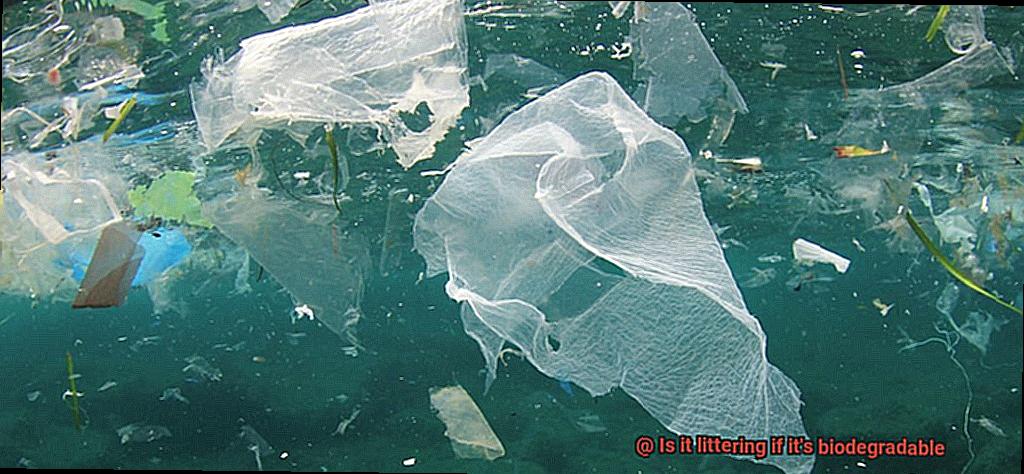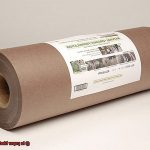Picture this: you’re out in nature, enjoying a delicious snack or refreshing drink, and suddenly realize there’s no bin in sight. It’s a common dilemma that leaves us wondering if leaving our biodegradable packaging behind is considered littering. After all, these products are more eco-friendly than traditional plastics, so they can’t be harmful to the environment, right? Wrong.
In recent years, the use of biodegradable materials has increased as a sustainable alternative to plastic. While these products may break down faster than conventional plastics, they’re typically not 100% biodegradable. So what does this mean for our planet?
In this blog post, we’ll dive into the debate surrounding biodegradable litter and its impact on the environment. We’ll explore the science behind these materials and why they don’t necessarily give us a free pass to leave our trash behind. Plus, we’ll discuss how biodegradable waste can harm wildlife and why it’s crucial to dispose of it responsibly.
Join us as we uncover the truth about biodegradable litter and why it remains a pressing issue we all need to be aware of. Keep reading to discover more.
What is Biodegradability?
Contents
- 1 What is Biodegradability?
- 2 Is Biodegradable Littering?
- 3 Potential Environmental Impacts of Biodegradable Littering
- 4 Proper Disposal of Biodegradable Items
- 5 The Role of Government and Businesses in Reducing Waste
- 6 Alternatives to Single-Use Plastics and Other Non-Biodegradable Items
- 7 Conclusion
Well, let me break it down for you. Biodegradability refers to an object’s ability to naturally break down into organic materials through the action of microorganisms. These little guys include fungi, bacteria, and other living organisms that feed on organic matter. It’s like a little party in your compost bin.
But the process of biodegradation isn’t always quick and easy. It can take anywhere from a few days to years depending on factors such as the type of material, temperature, moisture, and oxygen availability. So, think of it as a slow dance instead of a quick step.
Biodegradable materials can be made from natural substances like plants or animals, or synthetic substances like polymers. These materials are commonly used in packaging, disposable utensils, and other products that are intended to be discarded after use. However, not all biodegradable materials are created equal.
Some materials may only partially break down and leave behind harmful residues or microplastics that can still have negative impacts on the environment. That’s why it’s important to choose biodegradable products that have been certified by reputable organizations and dispose of them properly according to local regulations. We want to make sure we’re inviting the right guests to this party.
Even if an item is biodegradable, it doesn’t necessarily mean that it will break down properly if disposed of in the wrong way. For example, if a biodegradable item ends up in a landfill where there is insufficient oxygen for decomposition to occur, it may take just as long to break down as a non-biodegradable item. So let’s make sure we’re putting our biodegradable items in the right place.
Choosing biodegradable products is a step in the right direction for reducing waste and environmental harm. But remember, proper disposal is key to minimizing any negative impacts on the environment. So let’s do our part and choose wisely.
Is Biodegradable Littering?
It’s essential to understand what biodegradable means first. Biodegradable materials can break down into natural elements within a short time frame, typically under six months. Examples of such items include food waste, paper, and specific types of plastics.
But here’s the kicker – even though biodegradable items can decompose, the way we dispose of them can still be considered littering. Littering is the act of improperly disposing of waste in public spaces or areas where it doesn’t belong. Improper disposal of biodegradable materials can cause harm to the environment.
For instance, dropping a banana peel on a hiking trail may seem harmless, but it can pose a significant threat to wildlife and other hikers who could slip on it and get hurt. Similarly, throwing biodegradable food waste into a river can create an imbalance in the ecosystem by attracting pests and introducing excess nutrients into the water.
So what is the solution? It’s simple: always dispose of biodegradable materials properly, just as you would with any other type of waste. Use designated trash cans or composting facilities when available, and pack out your trash when camping or hiking in remote areas.
Think of it as being a responsible host for our environment. If you were hosting a party in your backyard, would you want your guests leaving behind their trash for you to clean up later? No. You’d provide designated areas for them to dispose of their waste properly. That is how we should treat our environment – by inviting only the right guests (the ones that will decompose properly) and ensuring their waste is appropriately disposed of.
To sum it up, merely because something is biodegradable does not mean we should litter with it. By taking care to dispose of biodegradable materials properly, we can help keep our environment clean and healthy for generations to come.
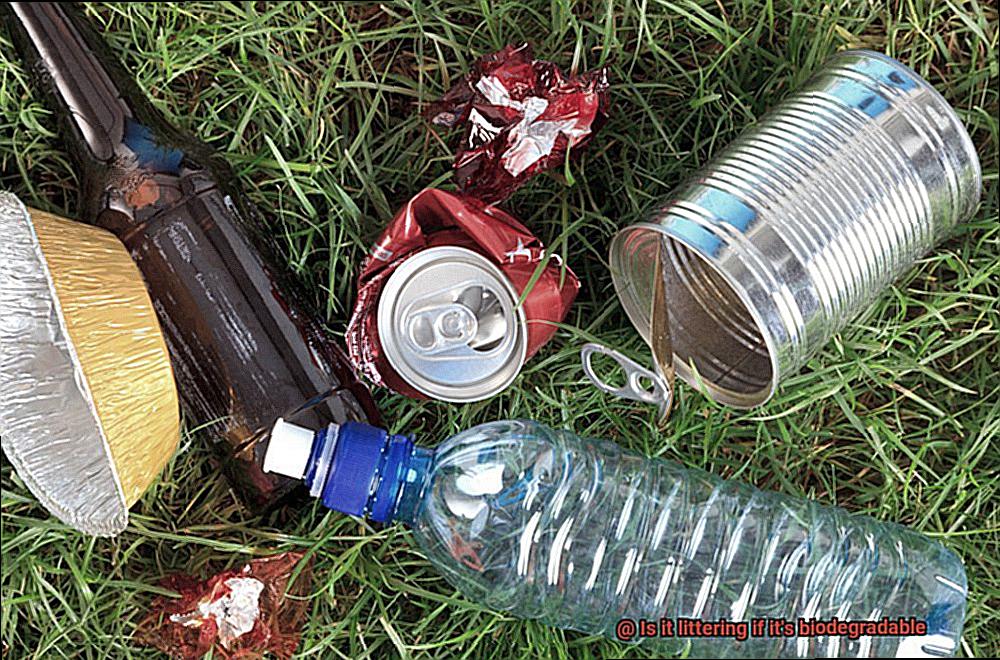
Potential Environmental Impacts of Biodegradable Littering
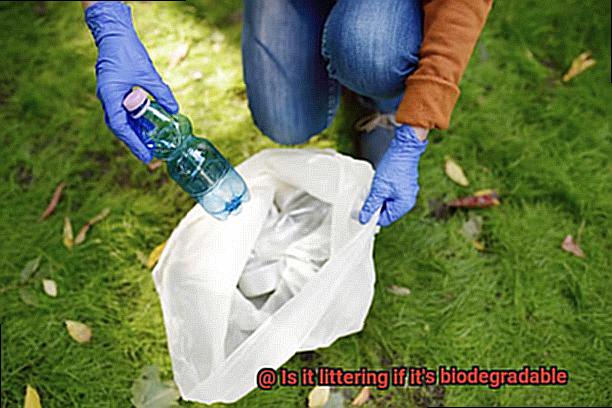
While it may seem convenient to toss a biodegradable cup or bag on the ground, this careless act can have serious consequences. Biodegradable materials are designed to break down naturally over time, but they can still cause harm during the decomposition process.
One of the main concerns with biodegradable littering is the potential for it to harm wildlife. Even though these materials are meant to be eco-friendly, they can still pose a threat to animals if they consume them or become entangled in them. Imagine throwing confetti at a party and a bird mistaking it for food. That’s what happens when we leave biodegradable litter lying around.
Another issue with biodegradable littering is its impact on soil and water quality. Decomposing biodegradable materials release nutrients into the soil, which can cause an imbalance in the ecosystem. This can lead to issues such as algal blooms in bodies of water, which can harm fish and other aquatic life. It’s like adding fertilizer to your garden, but instead of helping your plants grow, it kills them.
Additionally, biodegradable littering can contribute to greenhouse gas emissions. As these materials decompose, they release carbon dioxide and methane into the atmosphere, adding to the already harmful effects of climate change. It’s like blowing bubbles with gum and polluting the air we breathe.
To avoid these potential environmental impacts, it’s essential to dispose of biodegradable materials properly. Just like at a party, there should be designated areas for waste disposal, and we should use them responsibly. By doing so, we can protect wildlife, maintain soil and water quality, and reduce greenhouse gas emissions.
Proper Disposal of Biodegradable Items
Biodegradable items are the unsung heroes of waste – they can break down naturally over time without harming the environment. However, if they are not disposed of properly, they can still cause harm.
Fortunately, there are several ways to dispose of biodegradable items, and one of the most popular is through composting. Composting is like culinary magic – it involves breaking down organic matter into nutrient-rich soil that can be used for gardening. You can do this at home by setting up a compost bin or pile in your backyard or by using a composting service offered by your local community. Think of composting like baking a cake – you mix all the ingredients together and let them sit until it’s ready to be used.
Another way to dispose of biodegradable items is through recycling. Some biodegradable items can be turned into new products such as paper towels or tissue paper. Recycling is like giving old clothes a new life – you take something old and turn it into something new and useful. However, it’s essential to check with your local recycling program to see what types of biodegradable items they accept.
Lastly, if you cannot compost or recycle your biodegradable items, you should dispose of them in the trash. But before you do so, think twice.
Even though these items will eventually break down in a landfill, they still contribute to greenhouse gas emissions and can take a long time to decompose.
Think of throwing biodegradable items in the trash like throwing away money – you’re wasting something valuable that could have been used for good.
The Role of Government and Businesses in Reducing Waste
Just as a master chef carefully selects ingredients for their dish, governments and businesses must be equally conscientious when it comes to managing waste.
Governments can lead the charge by implementing policies and regulations that promote waste reduction, such as recycling programs and mandatory composting of organic waste. It’s like seasoning the perfect dish – a delicate balance is needed to ensure policies are effective in reducing waste while also being practical for citizens and businesses to implement.
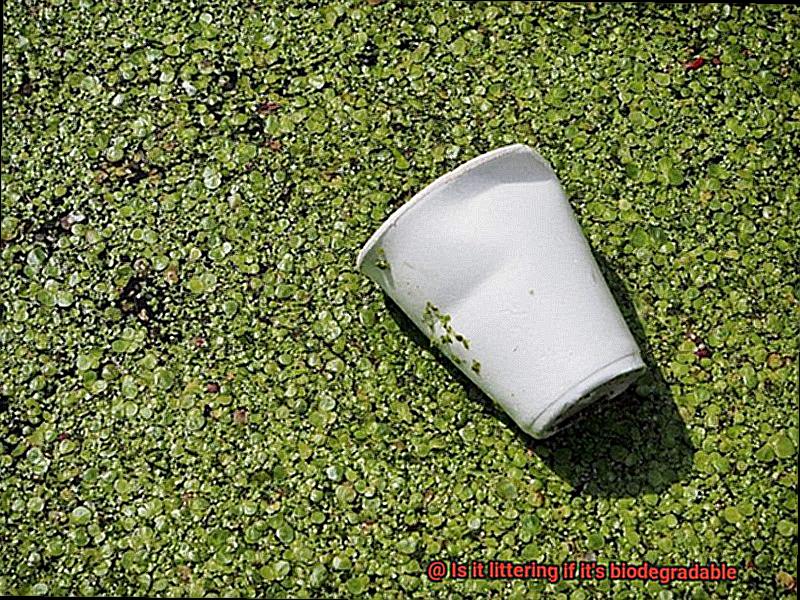
To motivate businesses to prioritize sustainable practices, incentives for those that implement such practices and penalties for those that do not can be likened to rewarding or punishing oneself for cooking success or failure. Such strategies can spur businesses to make sustainability a priority in their operations.
Businesses can also take steps to reduce waste and promote biodegradability by using biodegradable materials in their products and packaging – similar to how chefs prefer fresh, locally sourced ingredients. However, as a chef must store their food properly, businesses must also ensure that biodegradable materials are disposed of correctly to prevent harm to ecosystems.
Reducing the amount of packaging used and encouraging customers to use reusable containers is like using minimal plating to reduce food waste and promoting reusable cutlery instead of disposable ones. Efficient supply chain management practices can also reduce waste by preventing excess inventory or overproduction.
In summary, governments and businesses have a responsibility to work together in reducing waste, including biodegradable waste. By implementing sustainable practices and promoting responsible disposal methods, we can work towards a cleaner and healthier environment for all.
Alternatives to Single-Use Plastics and Other Non-Biodegradable Items
Are you ready to make some simple changes that can help protect our environment?
Let’s start with one of the biggest culprits – plastic bags. Did you know that plastic bags can take over 500 years to decompose? That’s why switching to paper bags is a game-changer. Not only are they biodegradable, but they decompose within a few weeks, making them a great choice.
Next up, let’s talk about utensils. Plastic utensils are not recyclable and end up in landfills where they can sit for hundreds of years. Bamboo utensils, on the other hand, are biodegradable and reusable too. They’re perfect for picnics, camping trips, or even just for lunch at work.
Plastic containers are another big problem when it comes to waste. They can take hundreds of years to decompose and often end up in our oceans, harming marine life. Glass containers, however, are recyclable and can be reused again and again. Plus, they’re perfect for storing leftovers or packing your lunch.
Paper napkins might seem like a small thing, but they contribute to deforestation and waste. Cloth napkins are a great alternative because they can be washed and reused multiple times. Plus, they add a touch of elegance to any meal.
Finally, let’s talk about straws. Plastic straws are one of the biggest contributors to marine pollution. They’re not biodegradable and can harm marine life if they end up in our oceans. Stainless steel straws, however, are reusable and last for years. Plus, they come in fun colors and designs.
xFPoIU5iiYQ” >
Conclusion
In conclusion, it’s important to remember that just because something is biodegradable doesn’t mean it’s acceptable to litter it. While biodegradable materials are designed to break down naturally over time, they can still cause harm during the decomposition process. Improper disposal of these items can lead to environmental damage and endanger wildlife.
To prevent littering and protect our planet, it’s crucial to choose biodegradable products certified by reputable organizations and dispose of them responsibly according to local regulations. Composting and recycling are excellent options for disposing of these items, but if those aren’t possible, throwing them in the trash is a better alternative.
Governments and businesses have a responsibility to reduce waste, including biodegradable waste. By implementing sustainable practices and promoting responsible disposal methods, we can work towards a cleaner and healthier environment for all.
We can also make simple changes in our daily lives by switching from non-biodegradable items like plastic bags, utensils, containers, paper napkins, and straws to their biodegradable alternatives like paper bags or bamboo utensils.
By making these small switches and disposing of our waste properly, we can reduce our impact on the environment and prevent further pollution.
